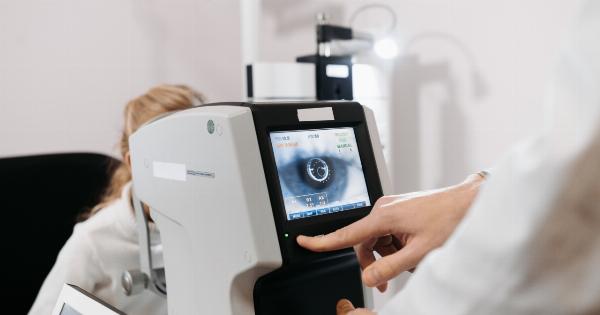When it comes to our health, our eyes are much more than windows to the soul. They can provide insight into our overall well-being, including the health of our heart. In fact, our eyes can reveal numerous heart health issues, both major and minor.
Here are ten eye-related signs that might indicate problems with your heart.
1. Yellow deposits on the eyelids
If you notice small yellow spots on your eyelids, it could be a sign of high cholesterol. The spots, known as xanthelasmata, are deposits of cholesterol that can indicate an elevated risk for heart disease and stroke.
If you notice these spots, it’s important to consult your doctor and get a cholesterol screening.
2. Bloodshot or bulging eyes
While bloodshot or bulging eyes can be a sign of fatigue or allergies, they can also indicate high blood pressure. When blood pressure is too high, it can cause the blood vessels in the eyes to constrict and become more visible.
This can lead to redness or bulging. If you notice these symptoms, it’s important to talk to your doctor and get a blood pressure check.
3. Blurred vision
If you’re experiencing sudden or persistent blurry vision, it could be a sign of diabetes. High blood sugar levels can damage the blood vessels in the retina, leading to blurred vision or even blindness.
If you notice these symptoms, it’s important to see a doctor and get your blood sugar levels checked.
4. Retinal changes
Changes in the retina can indicate a range of heart health issues, including high blood pressure, high cholesterol, and atherosclerosis.
If you’re experiencing sudden changes in your vision or if you notice that your retinal blood vessels are thickened or narrowed, it’s important to see a doctor for a full evaluation.
5. Double vision
While double vision can be a sign of a range of health issues, including neurological problems, it can also indicate an aortic aneurysm. This is a serious condition in which the aorta, the largest artery in the body, becomes weakened and bulges out.
If you experience sudden or persistent double vision, it’s important to see a doctor.
6. Pale or yellow whites of the eyes
If the whites of your eyes take on a pale or yellowish hue, it could indicate anemia. Anemia is a condition in which the body doesn’t have enough red blood cells, which can lead to fatigue, weakness, and shortness of breath.
Anemia can also be a risk factor for heart disease.
7. Swelling or puffiness around the eyes
If you’re experiencing sudden or persistent swelling or puffiness around the eyes, it could be a sign of heart or kidney problems.
When the heart or kidneys aren’t functioning properly, they can cause fluid to build up in the body, including around the eyes. If you notice these symptoms, it’s important to see a doctor for a check-up.
8. Drooping eyelids
Drooping eyelids can be a sign of a range of health issues, including neurological problems like Bell’s palsy, but they can also indicate myasthenia gravis, a condition in which the body’s immune system attacks the muscles responsible for controlling the eyelids. Myasthenia gravis can be associated with an increased risk of heart disease.
9. Blue or purple rings around the eyes
If you notice blue or purple rings around your eyes, it could be a sign of sleep apnea. Sleep apnea is a condition in which breathing stops and starts during sleep, which can lead to reduced oxygen flow to the body.
Sleep apnea can be a risk factor for heart disease, so it’s important to talk to your doctor if you notice these symptoms.
10. Dry or itchy eyes
If you’re experiencing dry or itchy eyes, it could be a sign of Sjogren’s syndrome, an autoimmune disorder that can affect the body’s ability to produce tears and saliva.
Sjogren’s syndrome can be associated with an increased risk of heart disease, so it’s important to see a doctor if you’re experiencing these symptoms.
Conclusion
While our eyes may seem like an unlikely source of information about our heart health, they can reveal a surprising amount of information.
If you’re experiencing any of the symptoms described above, it’s important to see a doctor for a full evaluation. By being attentive to these signs, you can take the first step toward maintaining a healthy heart.





























